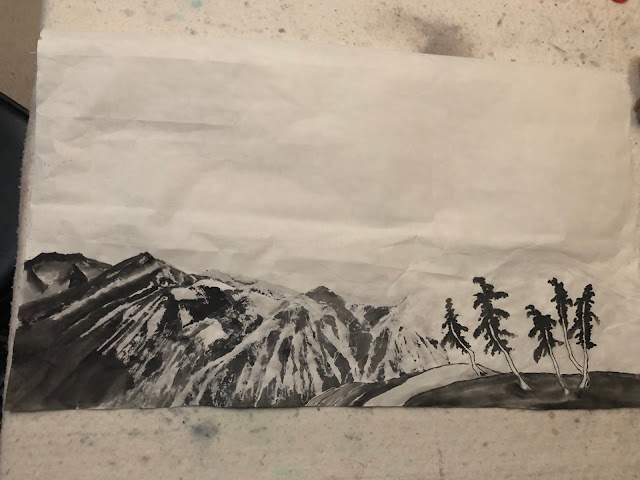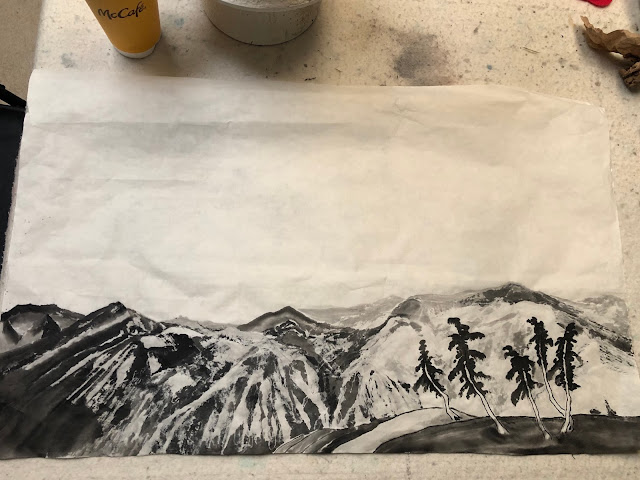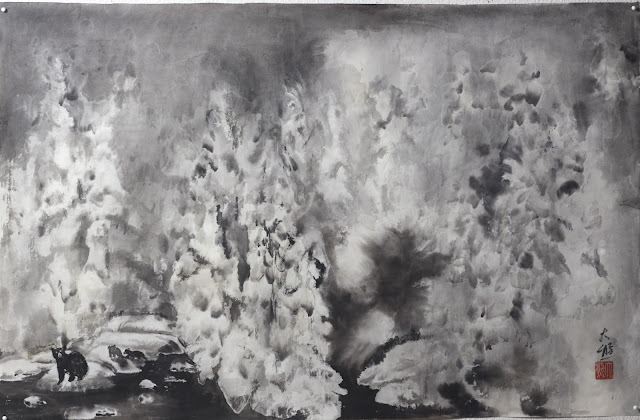One could see this feature quite prominently from a picture taken of a mountain range from the sky
and my painting highlighting that feature:
So my new plot is to do a black and white painting with a heavy emphasis of the lotus leaf chuen. For this exercise I am going to continue my experimentation with the alum solution.
I begin to paint on the back side of the Xuan, painting in my highlights with the alum solution. Obviously the point of doing that is to be painting on the top side of the Xuan eventually, and allowing the alum solution to mark the brightest areas, i.e. the ridges.
The trees might look whimsical to some viewers, but this method of rendering is actually quite common in traditional Chinese brush painting. The mountains while exemplifying the traditional style of lotus leaf chuen, exhumes little hint of a Chinese brush painting. So yes, I am toying with the contrast not only of dark and light ( ying and yang), but also of perceived styles of painting.
The top side of the painting shows a subdued black level with mottled look
Working from the reverse side again, the light side is kept light to maintain the contrast with the much darker adjacent land masses. I use a hair dryer to dry my brushstrokes before the ink has a chance to migrate. I am trying to keep and preserve the harsh, rigid attributes of the mountain ranges. I short, I am not looking for a soft, diffused appearance of my landscape.
Flipping my Xuan over, I am now looking at the top side
and now I can pick out the various spots on the painting that requires better definition
The brushstrokes done with alum solution on the back side help to impart a look of discrete stained patches on a piece of fabric. They are well defined and not dreamy at all.























































